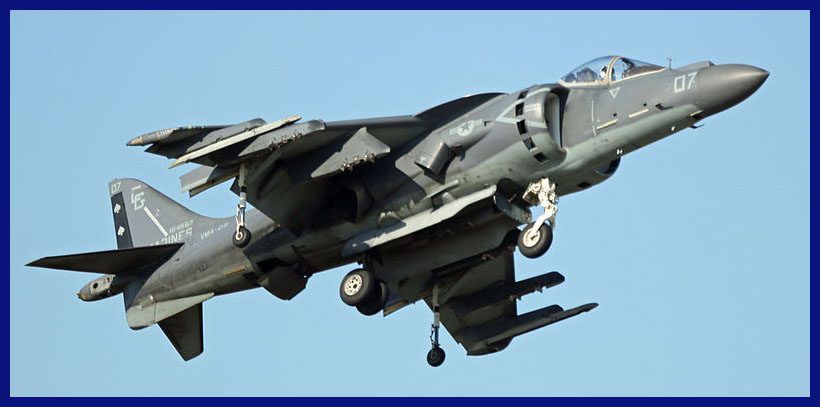The evolution of modern military aviation has witnessed the emergence of groundbreaking aircraft, each pushing the boundaries of technology and capability. Among these remarkable innovations, the McDonnell Douglas AV-8B Harrier II stands out as an exemplary testament to engineering prowess and operational versatility. Is an innovative, sophisticated, and state-of-the-art single-engine ground-attack aircraft that can take off and land vertically (STOVL) from aircraft carriers and ground bases.
It was precision-engineered as a highly advanced version of the British Sea Harrier family, with specific design features meticulously tailored to meet the rigorous demands of the United States Marine Corps. Despite being partially retired in favour of the F-35B, the AV-8B Harrier II’s exceptional functionality, core design, and skilful derivation from the original Sea Harrier make it a highly capable and cutting-edge fighter.
The McDonnell Douglas AV-8B Harrier II finds its operational application across the United States Marine Corps (USMC), the Spanish Navy, and the Italian Navy. It boasts the flexibility of deployment from compact aircraft carriers, expansive amphibious assault ships, and rudimentary forward operating bases. With an extensive track record encompassing both military endeavours and humanitarian missions, the AV-8B Harrier II underscores its adaptability and utility. While presently engaged in active service until 2025, the aircraft’s role will eventually be superseded entirely by the advanced F-35B Lightning II.
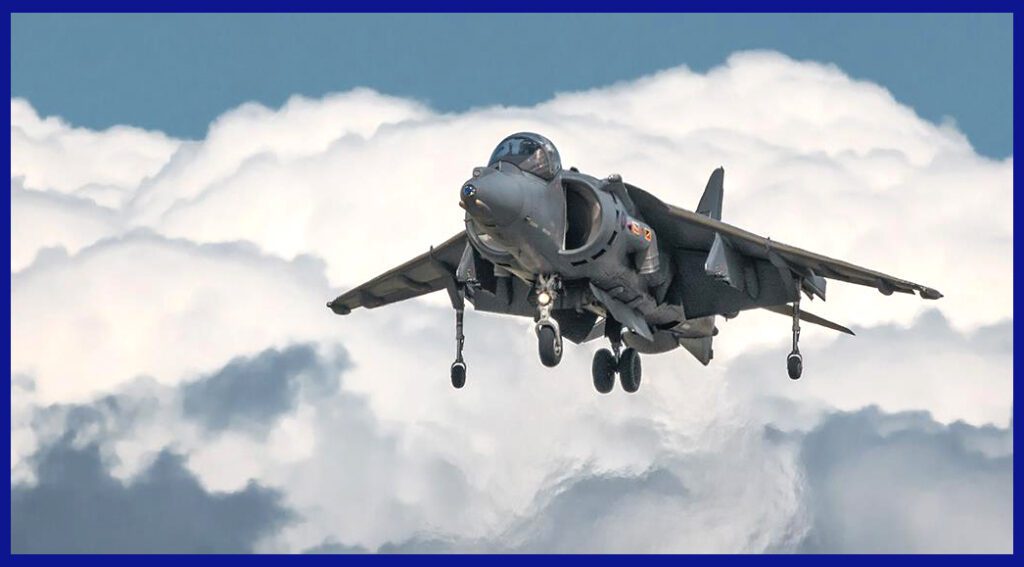
One of the unique features of the Harrier is its ability to take off and land vertically, allowing it to operate from small, unimproved airfields and short-deck aircraft carriers. This is made possible by the aircraft’s thrust vectoring system, which allows the pilot to direct the engine exhaust downwards to generate lift and enable vertical flight.
The AV-8B Harrier II has been used in a variety of combat roles, including close air support, reconnaissance, and ground attack. It has been deployed in conflicts such as the Gulf War, the Kosovo War, and the War in Afghanistan.
The McDonnell Douglas AV-8B Harrier II is an extremely proficient and adaptable aircraft that has demonstrated its efficacy in a variety of combat situations. It is a great tool for any military force due to its distinctive vertical takeoff and landing capabilities.
Launch of the McDonnell Douglas AV-8B Harrier II Project
During the early 1970s, a collaborative endeavour between the United States and the United Kingdom aimed to address the operational limitations observed in the first-generation Harrier aircraft. This partnership led to the inception of the AV-8B, marked by initial strides focused on the creation of an enhanced Pegasus engine, with a larger size and greater power. The overarching objective was to markedly elevate the capabilities of the Harrier platform.
The UK, however, gave up on the project in 1975 due to financial restrictions. Once the UK withdrew, McDonnell Douglas created the AV-8B by radically redesigning the preceding AV-8A Harrier. The aircraft keeps the fundamental shape of its predecessor but adds a new, larger composite wing with an extra hardpoint on each side, an elevated cockpit, a revised fuselage, and other structural and aerodynamic improvements.
The aircraft derives its propulsion from an enhanced iteration of the Pegasus engine. Taking to the skies for the first time in November 1981, the AV-8B accomplished its maiden flight, subsequently being inducted into the operational fleet of the USMC in January 1985. Progressing further, subsequent enhancements integrated night-attack capabilities and extended-range radar, resulting in the subsequent iterations known as the AV-8B Harrier II Plus variants.
In the 1990s, as a result of corporate mergers, Boeing Co. took over McDonnell Douglas’ program and began building the AV 8B Harrier. 340 aircraft were constructed over a 22-year period that came to an end in 2003. To keep the aircraft completely operational, In 2007, Boeing signed a $258.5 million performance-based logistics contract to support AV-8B Harriers operated by the U.S. Marine Corps, Italy and Spain.
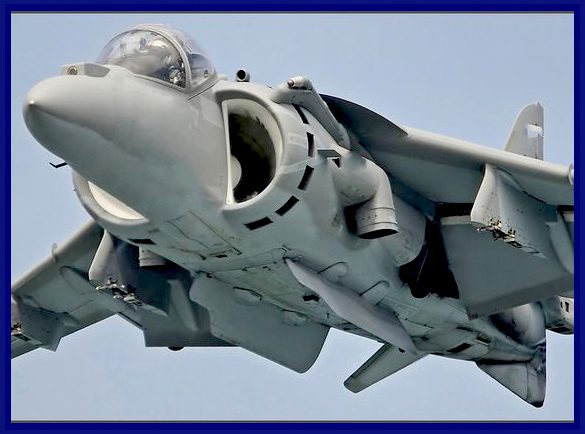
The Development of the AV-8B Harrier II
In August 1981, British Aerospace (BAe) and McDonnell Douglas solidified their collaboration through a memorandum of understanding, effectively marking the United Kingdom’s re-entry into the AV-8B Harrier II development program and providing it with renewed impetus. The persuasive factor behind the British government’s agreement to participate in the project lay in the understanding that the United States would bear the brunt of the development costs, while a substantial production run would lead to more economical acquisition expenses for Harriers. However, unlike the potential full partner status that would have been attained if the UK had not previously disengaged from the initiative, the agreement relegated BAe to the role of a subcontractor, delineating the terms of the partnership.
Hence the corporation that developed the AV-8B Harrier II received 40% of the work required to build the aircraft’s frame. The manufacturing was split between BAe in England and McDonnell Douglas in Missouri. The engine work was divided between Pratt & Whitney and Rolls-Royce, with Rolls-Royce receiving 75% of the work share. The United States Marine Corps planned to buy 336 aircraft from the two companies’ 400 Harrier II production, while the Royal Air Force was expected to purchase 60.
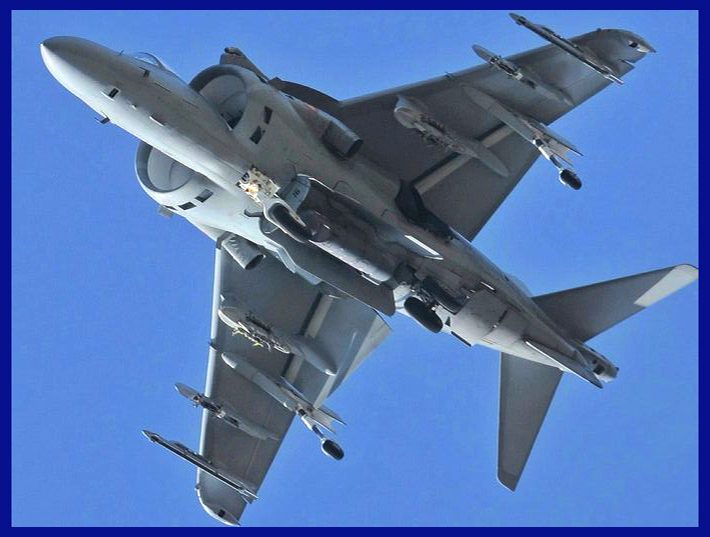
The Mission Behind the Development of the AV-8B Harrier II
The primary objective of the VMA STOVL squadron revolves around engaging and neutralizing both surface and aerial targets. Additionally, the squadron is entrusted with the responsibility of providing escort services for helicopters and executing various predetermined air operations. Notable functions attributed to the AV-8B Harrier II encompass:
- Execute close air support operations employing standard and specialized armaments.
- Conduct deep air support, including armed reconnaissance and air interdiction, using conventional and specific weapons.
- Engage in offensive and defensive anti-air warfare tasks encompassing combat air patrol, armed escort missions, and offensive sorties targeting enemy ground-to-air defences, all well within the operational capabilities of the aircraft.
- Demonstrate the capability to operate and effectively release ordnance during nocturnal conditions, as well as to navigate and operate proficiently in instrument flight scenarios.
- Possess the capacity to embark on extended operations through the utilization of aerial refuelling techniques.
- Demonstrate the ability to deploy to and effectively operate from carriers, as well as other appropriate seagoing platforms, advanced bases, expeditionary airfields, and remote tactical landing sites.
The AV-8B’s role in Operation Desert Storm (1991) marked its expeditionary prowess. As the Marine Corps’ debut tactical strike platform in the theatre, it embraced various bases. Three squadrons, 60 aircraft strong, operated from an expeditionary airfield, while a 20-aircraft squadron was sea-based. AV-8Bs established bases as close as 35 nautical miles (40.22 miles) to Kuwait’s border, showcasing their frontline tactical strike capacity. Amid this, they achieved an impressive 3,380 sorties and 4,083 flight hours, with over 90% mission capability. Remarkably, their average turnaround time for ground war surge flights was just 23 minutes.
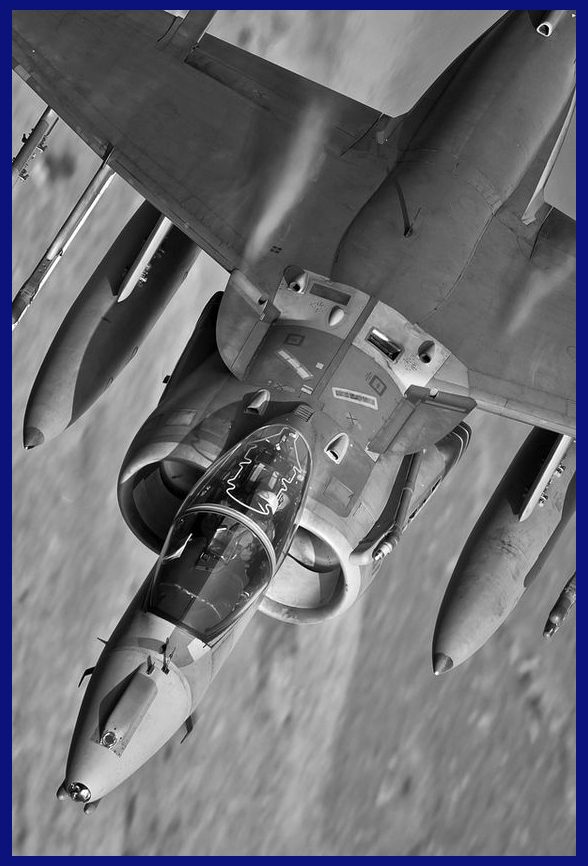
Conclusion of Manufacturing and Further Advancements
A helmet-mounted cueing system, for example, was one potential upgrade the USMC was looking into in 2013 to keep the AV-8B Harrier IIs current until their anticipated retirement. Also, it is anticipated that the radar and sensor systems on the aircraft may undergo further development. Due to F-35B delays and the fact that the USMC’s Harrier II fleet has more service life left than the USMC F/A-18 Hornets, it was anticipated that the fleet would remain in use until 2030.
However, the USMC decided to retire the AV-8B earlier in 2014 because switching the transition orders of the Harrier II and F/A-18 Hornet fleets to the Lightning II will result in a $1 billion cost savings. AV-8B service was planned to last until 2025 before the F-35B started to replace it in 2016. Meanwhile, the AV-8B is to receive revamped defensive measures, updated data-link capability and targeting sensors, and improved missiles and rockets, among other enhancements.
The Variants of the Harrier Include:
- AV-8B Harrier II (The original “day attack” version)
- AV-8B Harrier II Night Attack (Enhanced iteration featuring FLIR, upgraded cockpit with compatibility for night-vision goggles, and the more potent Rolls-Royce Pegasus 11 engine)
- AV-8B Harrier II Plus (Resembling Night Attack variant, includes APG-65 radar and unique targeting pod. Used by USMC, Spanish Navy, and Italian Navy, with forty-six produced.)
- TAV-8B Harrier II ( Two-seat trainer version )
- EAV-8B Matador II (Designation for the Spanish Navy version by the company)
- EAV-8B Matador II Plus ( The AV-8B Harrier II Plus, ordered for the Spanish Navy )
- Harrier GR5, GR7, GR9 ( for USMC & RAF )
-

Photo Credit: McDonnell Douglas - Crew: 1 ( in trainer version 2 )
- Length: 46 ft 4 in (14.12 m)
- Height: 11 ft 8 in (3.55 m)
- Wingspan: 30 ft 4 in (9.25 m)
- Wing area: 243.4 sq ft (22.61 m2)
- Empty Weight: 6,340 kg ( 6,340 kg )
- Gross weight: 10,410 kg ( 22,950 lb )
- Max takeoff weight: 14,100 kg ( 31,000 lb )
- Powerplant: One Rolls-Royce Pegasus F402-RR-408 (Mk 107) vectored-thrust turbofan, generating 23,500 lb (105 kN) of thrust.
- Maximum Speed: 1,083 km/h ( 673 mph )
- Mach: Mach 0.9
- Ferry range: 3,300 km ( 2,100 mi )
- Combat range: 556 km ( 350 mi )
- Service ceiling: 38,000 feet
- Rate of climb: 14,700 ft/min
- Armament: Guns – Equipped with 1 × 30 mm General Dynamics-barreled rotary cannon, situated under the fuselage in the left pod. This is accompanied by 300 rounds of ammunition stored in the right pod.
- Hardpoints: There are 7 hardpoints available—1 beneath the fuselage and 3 beneath each wing. These collectively offer a capacity of 4,200 kg (9,200 lb), providing the flexibility to carry various combinations of weaponry such as Sidewinder, AMRAAM (AAM), Maverick, Sidearm (ASM), bombs (JDAM, Paveway, etc.), and rockets.
Specifications of the AV-8B Harrier II
Furthermore, seize this exclusive opportunity to acquire the exquisite large-scale 1/72 premium die-cast models of the formidable BAe Harrier GR.7 – “Exercise Snow Falcon”. These remarkable and iconic naval military jets boast an impeccable track record and are now available for purchase on AirModels with worldwide delivery. Click here now to secure your piece before the limited stock is depleted.
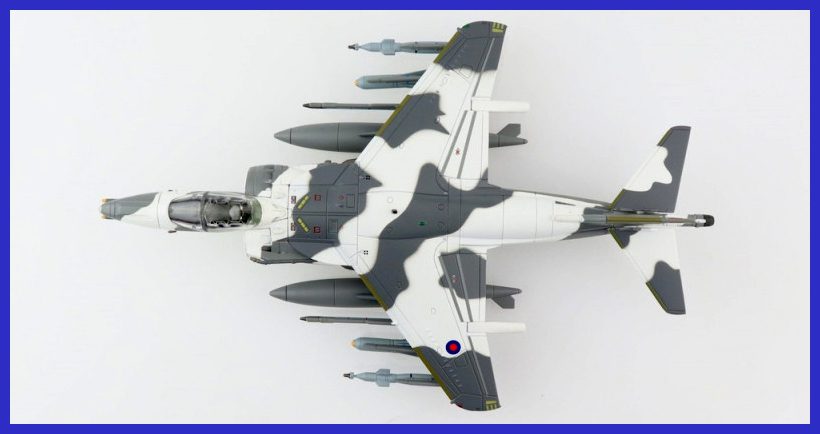
In conclusion, the McDonnell Douglas AV-8B Harrier II stands as a remarkably adaptable and proficient aircraft, consistently proving its efficacy across a diverse array of combat scenarios. The distinctive capabilities it offers, including its vertical takeoff and landing prowess coupled with impressive speed and range, have positioned it as a valued asset within global military arsenals. Despite the passage of time, the enduring relevance of the Harrier II endures, supported by its continued service with multiple nations—a testament to its enduring prowess.
While it has succeeded in USMC deployment by more contemporary aircraft, its legacy as a groundbreaking STOVL platform and an early VTOL technology trailblazer will resonate through the years. On the whole, the McDonnell Douglas AV-8B Harrier II emerges as an exceptional aircraft, leaving an indelible mark on military aviation. The lasting impact it has etched stands as a tribute to the inventiveness and innovation of its creators, ensuring its influence in the realm of aviation for generations to come.
Important Announcement for Our Valued Readers!
After an article is published, it is possible that updates or changes may have occurred beyond the time of publication. Therefore, it is important to be aware that certain information in the article might be outdated. To ensure the most accurate analysis, it is highly recommended to verify the content with the latest sources available.
However, we are dedicated to delivering outstanding articles on military products and global updates. Maintaining quality and smooth operation requires resources. Your support sustains our efforts in providing insightful content. By purchasing high-quality products through our affiliated links, you help us keep our platform alive and acquire top-notch items. Your unwavering support is invaluable and inspires us to strive further.
We welcome your suggestions and requests for more information, as we value feedback from our readers. If there’s specific defence material or equipment not covered on our site, please share your request in the comments. We’ll strive to research and provide the required information. We sincerely thank you for your unwavering interest in our website, and we eagerly anticipate hearing from you! Enjoy your reading experience!

